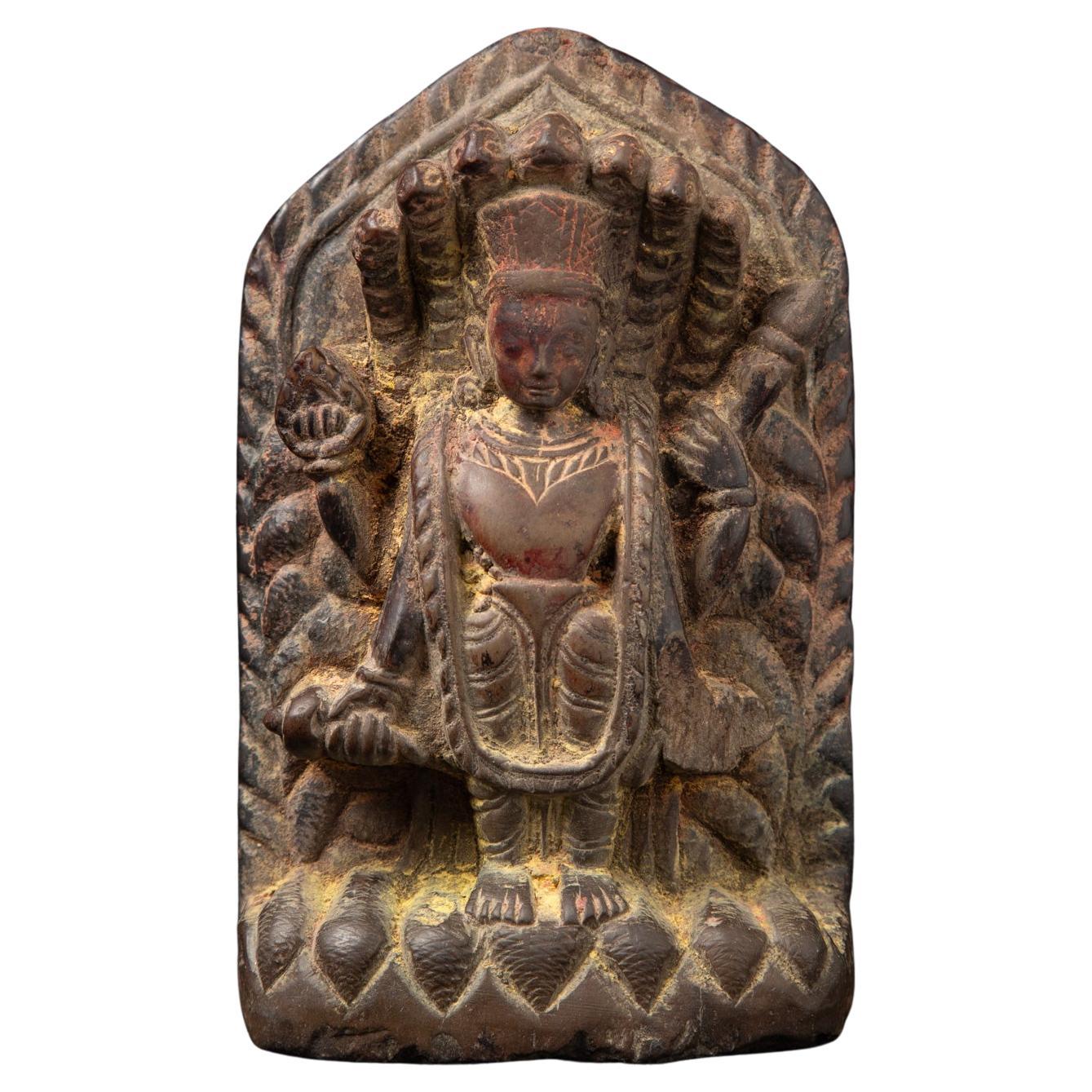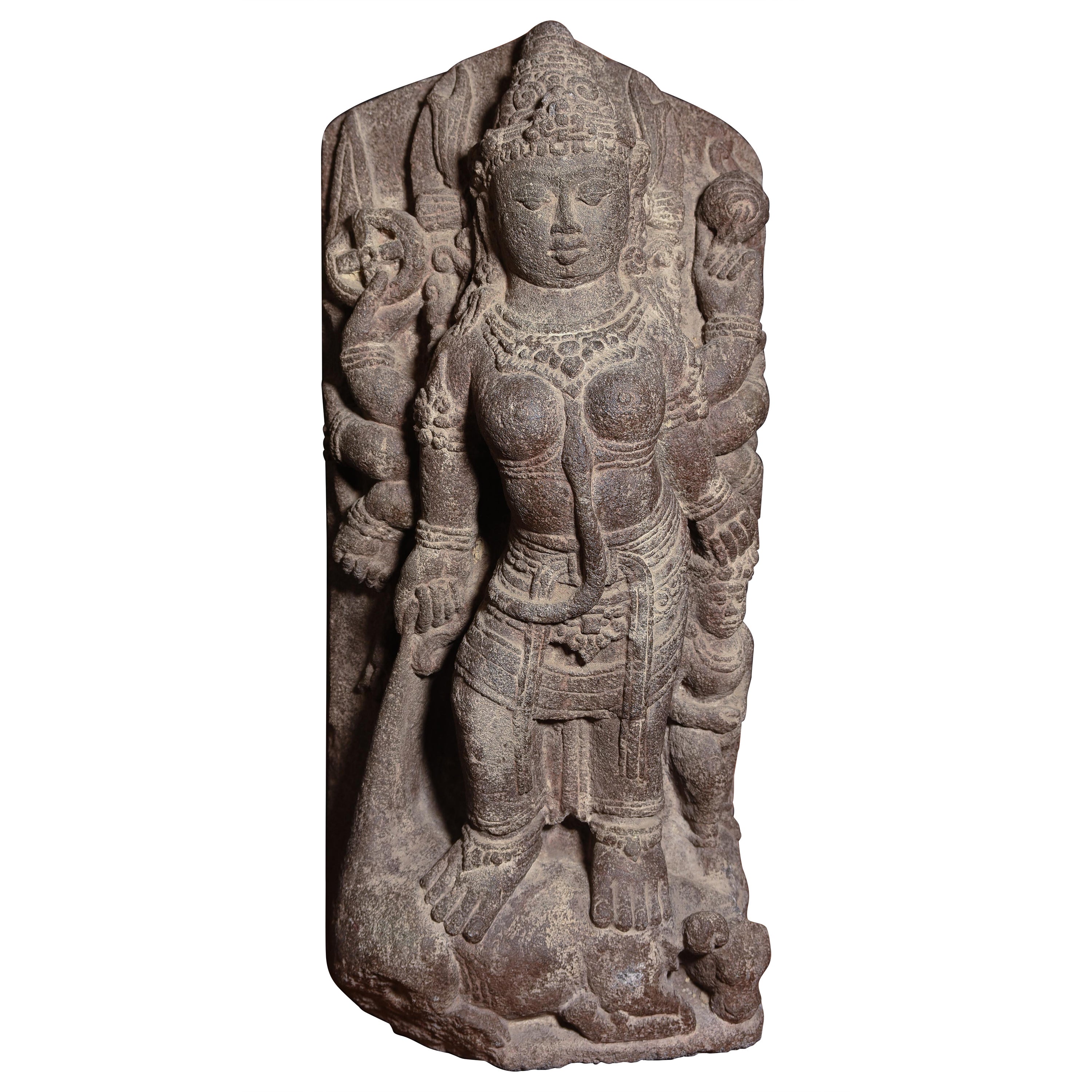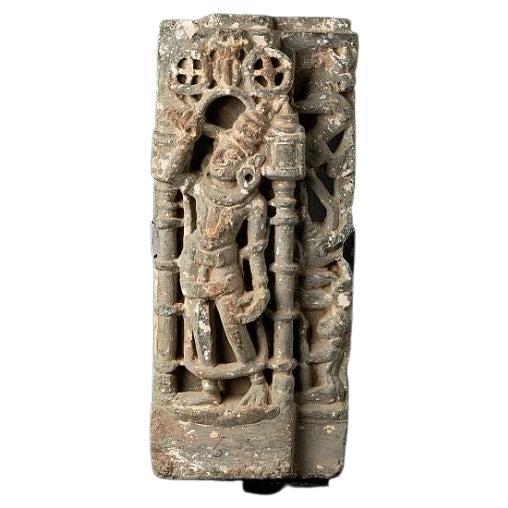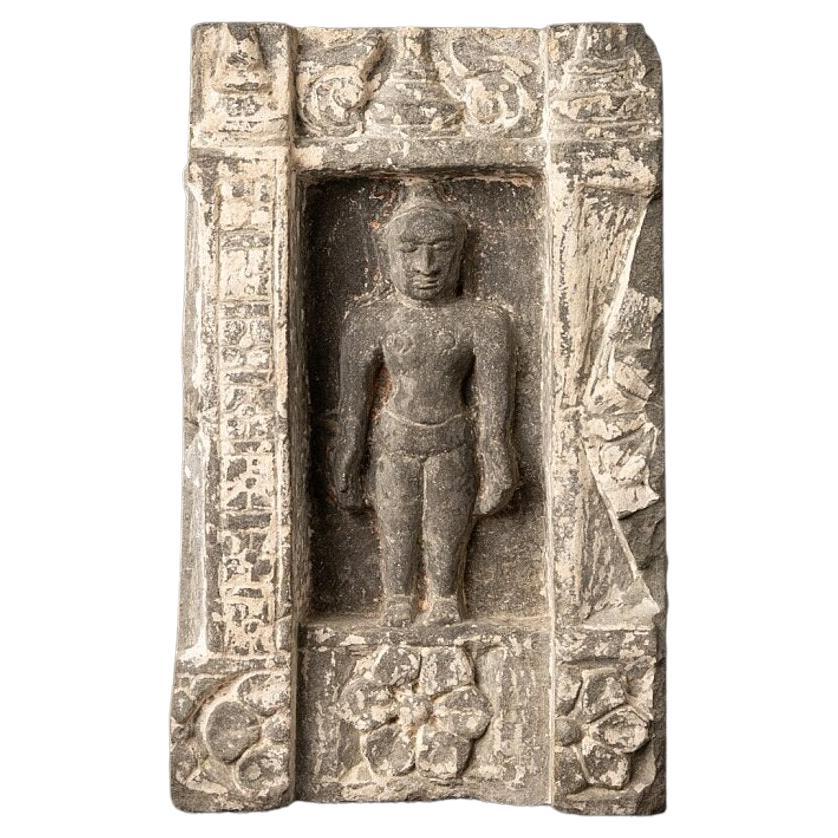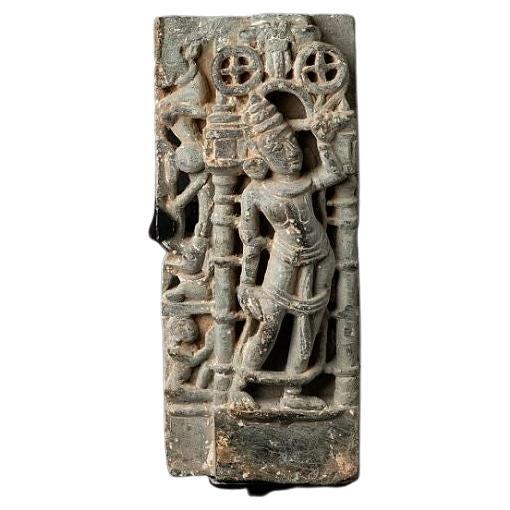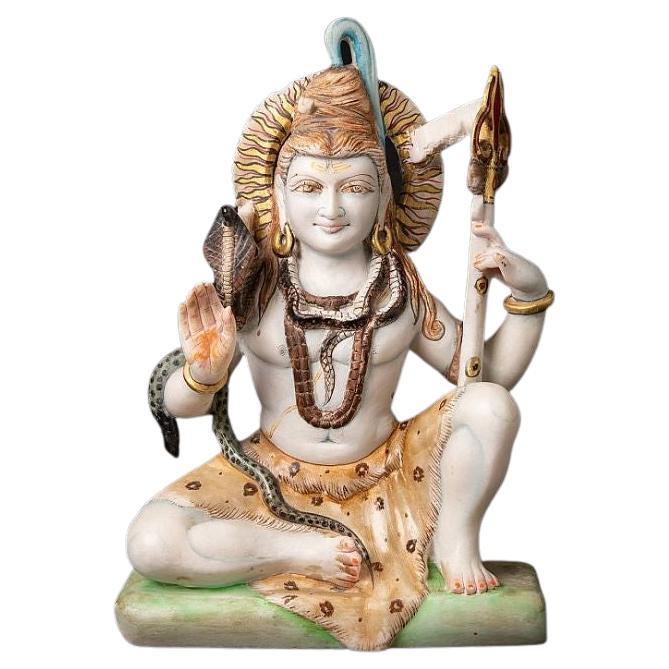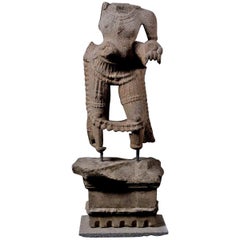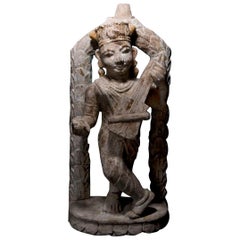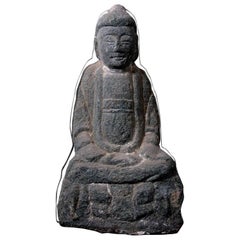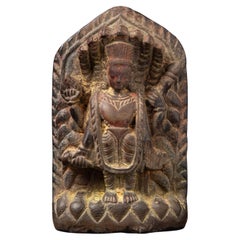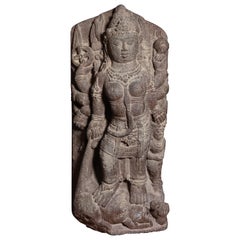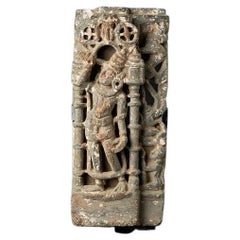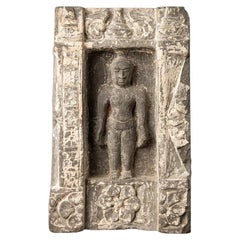Items Similar to Complete Granite Figure of Shiva
Want more images or videos?
Request additional images or videos from the seller
1 of 13
Complete Granite Figure of Shiva
$15,700
£11,912.80
€13,621.22
CA$21,928.64
A$24,381.67
CHF 12,730.76
MX$296,784.26
NOK 162,438.97
SEK 152,197.55
DKK 101,657.67
Shipping
Retrieving quote...The 1stDibs Promise:
Authenticity Guarantee,
Money-Back Guarantee,
24-Hour Cancellation
About the Item
Complete granite figure of Shiva showing his attributes in a standing hieratic pose, fully dressed and jeweled in royal regalia with tiara on a high pedestal with a flaming halo. Late Vijayanagar Dynasty.
- Dimensions:Height: 25 in (63.5 cm)Width: 36 in (91.44 cm)Depth: 12 in (30.48 cm)
- Materials and Techniques:
- Place of Origin:
- Period:
- Date of Manufacture:18th Century
- Condition:Wear consistent with age and use.
- Seller Location:San Pedro Garza Garcia, MX
- Reference Number:Seller: IN-0771stDibs: LU3172311815113
About the Seller
3.7
Vetted Professional Seller
Every seller passes strict standards for authenticity and reliability
1stDibs seller since 2017
24 sales on 1stDibs
Typical response time: 1 to 2 days
- ShippingRetrieving quote...Shipping from: San Pedro Garza Garcia, Mexico
- Return Policy
Authenticity Guarantee
In the unlikely event there’s an issue with an item’s authenticity, contact us within 1 year for a full refund. DetailsMoney-Back Guarantee
If your item is not as described, is damaged in transit, or does not arrive, contact us within 7 days for a full refund. Details24-Hour Cancellation
You have a 24-hour grace period in which to reconsider your purchase, with no questions asked.Vetted Professional Sellers
Our world-class sellers must adhere to strict standards for service and quality, maintaining the integrity of our listings.Price-Match Guarantee
If you find that a seller listed the same item for a lower price elsewhere, we’ll match it.Trusted Global Delivery
Our best-in-class carrier network provides specialized shipping options worldwide, including custom delivery.More From This Seller
View AllMaharaja Granite Torso
Located in San Pedro Garza Garcia, Nuevo Leon
Maharaja granite torso with dagger and offerings, bell chain and dhotti.
Category
Antique 18th Century Indian Sculptures and Carvings
Materials
Granite
$18,750
Black Granite Maharaja Torso, 18th Century, India
Located in San Pedro Garza Garcia, Nuevo Leon
Black Granite Maharaja Torso with a big pearl necklace on his powerful chest showing pranayama respirations and a crown on the forehead. Long mustache and royal attributes. Maharaja is sanskrit for "great ruler" or "great king". This beautiful piece features a custom polished green ubatuba granite base.
The tradition of Indian sculpture is the oldest in the world, dating back to the Indus Valley...
Category
Antique 18th Century Indian Figurative Sculptures
Materials
Granite
Expressive Sandstone Sculpture of Apsara Playing Sitar, 18th Century India
Located in San Pedro Garza Garcia, Nuevo Leon
Sandstone sculpture of Apsara playing sitar with dancing pose in front of a garland arch. Covered with rests of stucco and old painting with beautiful face expression and flower lotus tiara...
Category
Antique 18th Century Indian Figurative Sculptures
Materials
Sandstone
Shakyamuni, the Original Buddha Sculpted in Schist Stone, Originally from a Cave
Located in San Pedro Garza Garcia, Nuevo Leon
Shakyamuni, the original Buddha sculpted in schist stone. Originally from a cave.
Sui dynasty '589-618' AD
Gautama Buddha, also known as Siddhartha or simply the Buddha. He was an a...
Category
Antique 15th Century and Earlier Chinese Antiquities
Materials
Schist
Monumental "Bigger Than Life Size" Wooden Bodhisattva
Located in San Pedro Garza Garcia, Nuevo Leon
Imposing figure of Bodhisattva sitting in a royal pose with a beautiful serene expression, with semi close eyes expressing beatitude, in very well carved robes and pearl strings on t...
Category
Antique Late 17th Century Chinese Antiquities
Materials
Wood
Elegant Sandstone Sculpture of Apsara Playing Sitar, 18th Century, India
Located in San Pedro Garza Garcia, Nuevo Leon
Elegant sandstone sculpture of apsara playing sitar with missing arms with a beautiful face and a high tiara and pleated robes. It comes with a custom Lucite base.
Weight: 21.3 lb...
Category
Antique Early 18th Century Indian Figurative Sculptures
You May Also Like
Early 17th Century Special antique stone Vishnu statue from Nepal
Located in DEVENTER, NL
This special antique stone Vishnu statue, originating from Nepal and believed to date back to the 17th century or earlier, is a remarkable piece of sacre...
Category
Antique Early 17th Century Burmese Sculptures and Carvings
Materials
Stone
9th Century Stone Durga from Java-Stone Masterpiece, Large, Authentic - 9198
Located in Ukiah, CA
Masterpiece 9th century stone durga from Java. This sculpture is one of the finest I've had the pleasure of offering in over 30 years. The Deep spiritual presence is palpable in the ...
Category
Antique 15th Century and Earlier Southeast Asian Antiquities
Materials
Stone
$14,000 Sale Price
20% Off
Antique Granite Statue from Jain Temple from India
Located in DEVENTER, NL
Material: Granite
Material: wood
53,5 cm high
19,8 cm wide and 13,5 cm deep
Weight: 12.9 kgs
The height is measured including the stand. Just the granite figure is 39 cm high
...
Category
Antique 15th Century and Earlier Indian Sculptures and Carvings
Materials
Wood
Antique Stone Jain Statue from India
Located in DEVENTER, NL
Material: Natural stone
Material: wood
Measures: 32,5 cm high
20,5 cm wide and 7 cm deep
Weight: 7.676 kgs
Originating from India
17th century, possibly earlier
Part from a l...
Category
Antique 17th Century Indian Sculptures and Carvings
Materials
Wood
Antique Granite Statue from Jain Temple from India
Located in DEVENTER, NL
Material: Granite
Material: wood
51,5 cm high
21,5 cm wide and 13,5 cm deep
Weight: 11.3 kgs
The height is measured including the stand. Just the granite figure is 39 cm high
...
Category
Antique 15th Century and Earlier Indian Sculptures and Carvings
Materials
Wood
Old Marble Shiva Statue from India
Located in DEVENTER, NL
Material: marble
37 cm high
25,5 cm wide and 12,5 cm deep
Weight: 8.595 kgs
Originating from India
Middle 20th century
Very nice quality !.
Category
Mid-20th Century Indian Sculptures and Carvings
Materials
Marble
More Ways To Browse
Figural Carving Furniture
Figural Pedestals
Antique Granite
Antique Tiaras
Pedestal India
Antique Shiva
Asian Antiques
Fine China
Japanese Wood
Wood Japanese Furniture
Original Asian Art
Wood Carving Sculptures
Antique Wood Carvings
Provenance Antiques
Antique Asian Sculpture
19th Century Wood Carving
Asian Carved Wood Furniture
Japanese Stone
